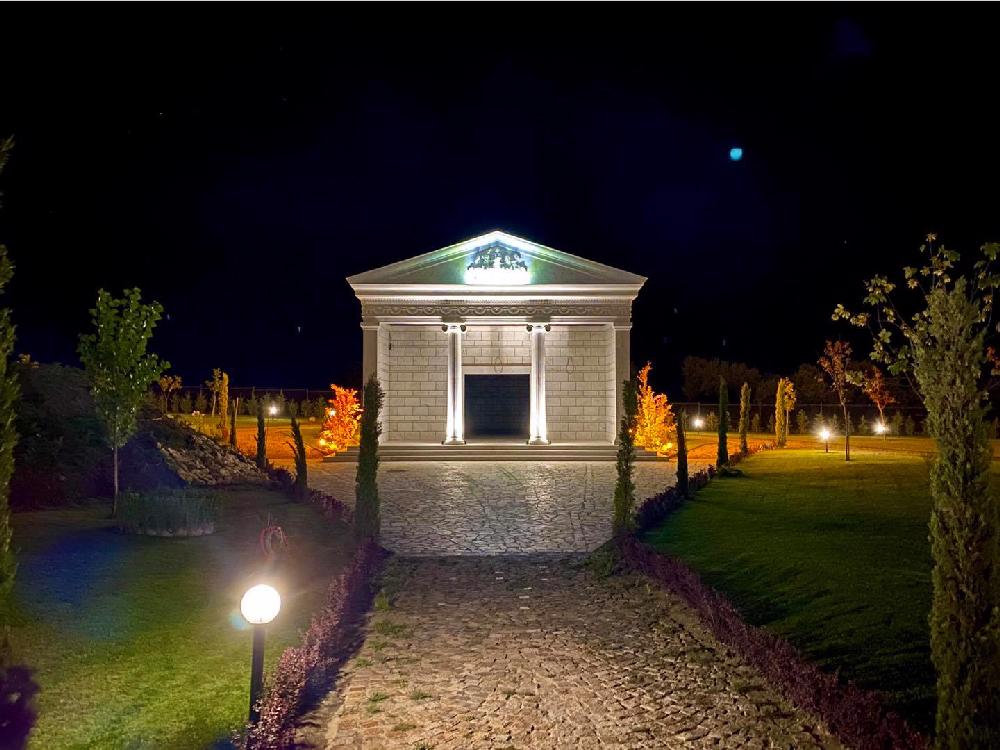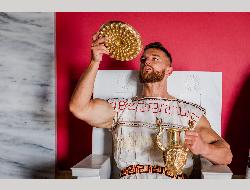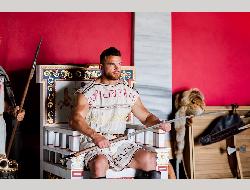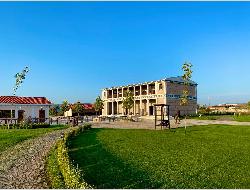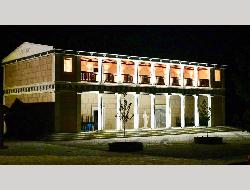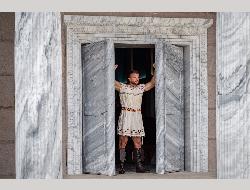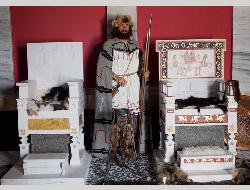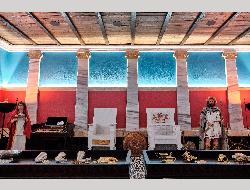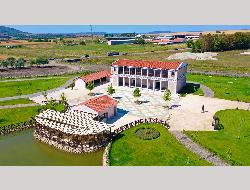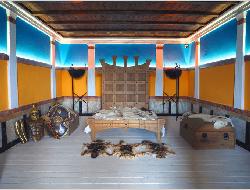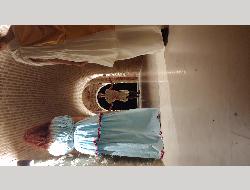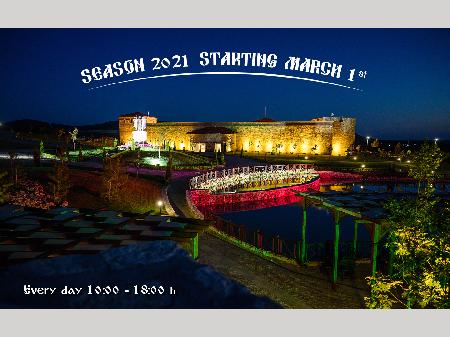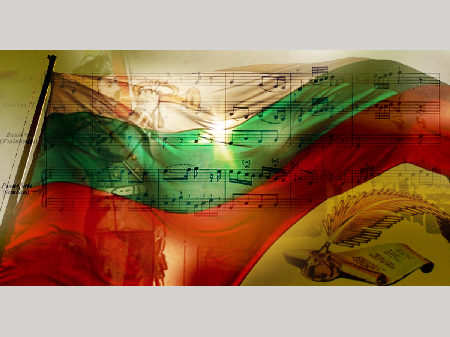They were excellent farmers, cattle breeders, potters, miners, goldsmiths, horsemen and sailors.
Today, scholars know about 80 tribes, the most famous being the Getae, Bessi, Odrysians, Maedi, Triballi, Edonians, Moesi, and so on.
The Thracians emerged as a community around the 3rd millennium BC. The true Thracian era covers the period from 2000 BC to the 5th-6th centuries AD and in the Park, you can see many of their architectural and cultural achievements from that time reconstructed.
1. The temple of the mother goddess Cybele
The goddess Cybele embodies the reviving nature and its fertility. She is the protector of mountains, forests and animals, the mother of the gods and all living things on earth. The original temple was accidentally discovered in Balchik during construction works in 2007. The construction company intended to cover up the news of the discovery in order to continue its activities undisturbed, but workers revealed that ancient ruins have been found. Later, archaeologists arrived on the site to study the site.
This is the only temple of Cybele in the eastern part of the Balkan Peninsula and the best preserved Thracian temple in Bulgaria, and the significance of the finds is comparable to those of the ancient complex in Pompeii. The inscriptions and marble sculptures finds are extremely important archeological monuments, reflecting the religious and social life in Dionysopolis. In number and variety, this is the largest group of movable monuments related to the cult of Cybele ever discovered in her temples.
2. King Telephus
Telephus was king of Moesia, son of Auge and Heracles (Hercules). According to a famous legend, he was raised by a doe, so he always had an image of a doe on his shield. The weapon he holds is the makhaira, one of the most characteristic of the Thracians.
3. Thracian palace of King Seuthes III
The reconstruction of the Thracian palace was borrowed from the remains found in the town of Seuthopolis (the capital of Seuthes III), which today are at the bottom of the Koprinka Dam. The palace is built on two floors with its typical Dorian marble columns. On the bottom floor, there is a throne room, which was designed for various rituals, audiences and commercial contracts concluded through the use of popular treasures in front of many witnesses. To the right of the throne room is a sanctuary, and to the left is the treasure room, which presents some of the most valuable and historically important treasures found in Bulgaria - Borovo, Valchitran, Panagyurishte and Rogozen. On the second floor is the wine tasting room, the ruler's bedroom and there is also a beautiful view of the Historical Park.
4. The first tomb, borrowing artistic motifs from the Thracian tomb to the village of Sveshtari, Isperih municipality. It presents a one-of-a-kind architecture with sculptural images of caryatids - the women who symbolically support the walls of the tomb. A scene of deification of the ruler is depicted on the ceiling. Thanks to its remarkable architecture and artistic decoration, the Sveshtari Tomb has been on the UNESCO World Heritage List since 1985.
5. The second tomb, borrowing artistic motifs from the Alexandrov tomb, discovered in the village of Alexandrovo near Haskovo. This is one of the two tombs in Bulgaria that have been found with preserved frescoes, from which we can judge in more detail how the Thracians imagined the afterlife. The most diverse murals are present in the round chamber - it is painted in six horizontal bands of different widths located one above the other. Most frescoes depict hunting scenes.
6. The third tomb, borrowing artistic motifs from the Pomorie domed tomb, located about 1 kilometer from the town of Pomorie. The use of the tomb can be judged mostly by its architecture and construction because when it was found empty of any artifacts. It is often described as one of the most mysterious sites discovered in our lands. It is impressive with its long corridor called a “dromos” and the hollow column that is located in the main hall. The most common assumptions about its use are related to the fact that it was probably used as a temple and sanctuary, in which the Thracian priests performed their rituals and mysterious practices.
7. Spartacus
He was born about 100 years before the new era and came from the Thracian tribe of the Maedi (in the area surrounding the present town of Sandanski). He led the largest slave revolt against the Roman Empire, which at some point numbered 120,000 people speaking more than 10 different languages. He was obviously a remarkable, brave and significant man to be able to unite so many different people. No chronicler of the first centuries of the new era remained indifferent to the work of Spartacus and his virtues. His name forever remains a symbol of rebellious spirit, courage and strong will. Never in battles with the Romans did he allow his army to get drunk on success and commit immoral acts. When he found himself in difficult situations with an indomitable spirit, he came out with the moral right of his side and a deserved victory. Today, Spartacus is a person from whom each of us can draw inspiration for one’s pursuit of one of his most important needs in life - freedom.
